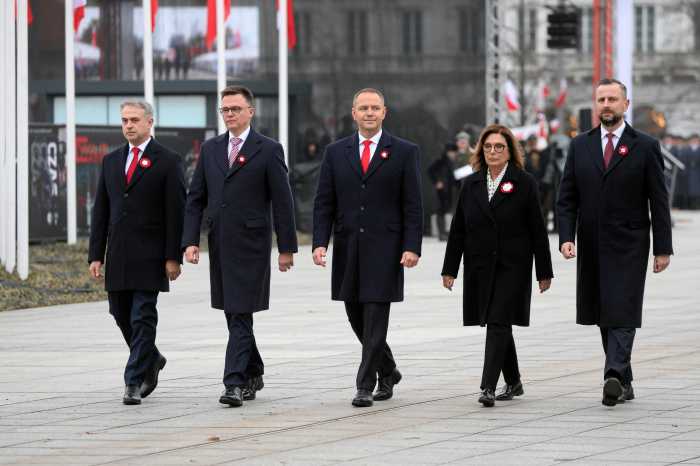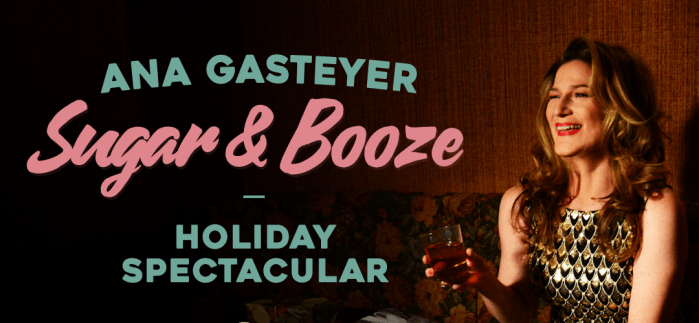Mental-illness documentary gathers pieces of a dream
Forty-five-year-old child-man Daniel Johnston—bipolar singer/ songwriter and visual artist, brand name of a family-run cultural cottage industry, frowzy idol to a far-flung coterie—is the mercurial object of Jeff Feuerzeig’s absorbing nonfiction portrait “The Devil and Daniel Johnston.”
Johnston is introduced in adolescence, emblematically videotaping himself in a mirror and soliloquizing about his condition, which admits access to “the other world.” Inky monochrome footage of Johnston onstage in a Los Angeles club applies a hagiographic sheen right from the main titles. His evangelical Christian upbringing in West Virginia flashes by in a cataract of lusciously hued snapshots, their rounded corners incised against matte black within the screen frame, and miles of Super-8 home movies aswirl with emulsion decay resembling olive snowflakes, or blown up to near-pointillist diffusion.
Johnston’s talent surfaced early, and by the time he reached high school, he had already honed a signature visual repertoire of line-drawn motifs such as ominous bat-winged eyeballs and benevolent karmic frogs. With an equally precocious eye to posterity, he compulsively recorded everyday banter on audiocassette; Feuerzeig and editor Tyler Hubby sifted through a stockpile of tapes to extract a lapidary narration from Johnston’s own handiwork.
The family’s initial indulgence contracted into worry, then outright hostility to Daniel’s departure from their expectations. One audiotape snippet preserves mother Mabel excoriating his “satanic cartoons” and castigating him as an “unprofitable servant” of the almighty, as well as the town laughingstock, out to besmirch her born-again propriety. Daniel’s dad Bill emerges rather more sympathetically, owing not least to his death-cheating rescue when his adult son, seated beside him midair in the family’s small prop plane, tore the keys from the ignition and chucked them out the window.
This was perhaps only the most vivid episode of a psychosis that dawned in Johnston’s youth, after his romantic obsession with a blonde college classmate was extinguished by her marriage to an upwardly mobile mortician. Johnston impulsively joins a traveling circus and lands in the musical hothouse of mid-80s Austin. While showering random passersby with his individually recorded, hand-packaged cassettes like the now-mythic “Hi, How Are You?” and nursing another fixation with local celebutante Kathy McCarty, he cozens his way onto an MTV special about the exploding Austin scene and, overnight, wins a rapt hipster following.
Soon the phone at the McDonald’s where Johnston works is ringing nonstop with bookers, editors, producers; for management the novelty vanishes fast. Things head sharply south after he ingests an acid tab at a Butthole Surfers gig, recalled in part by lead singer Gibby Haynes, ostentatiously interviewed while having fillings inserted in a dental office. Among the production team there’s a number of avant-garde affiliations, and Johnston’s 2006 Whitney Biennial confrere Martha Colburn supplies a whimsically demented animation to illustrate his LSD trip. But whatever boundary dissolved, whatever artesian terror was breached in the experience, is no joke.
Even as his underground fame widens, Johnston succumbs to violent fugues, dealing his manager a lead-pipe concussion and cracking his brother’s rib at a family Christmas gathering, prompting the first of many stints in psychiatric infirmaries. An onomantic paranoia develops, the diabolical symbol 666 tormenting him as a trial-and-error battery of medications lashes his mind. A propitious visit to New York sours when he’s detained for vandalizing the Statue of Liberty, then hits a train-wreck-in-slow-motion crescendo at a concert packed with music illuminati—alone onstage, clad entirely in white, Johnston’s squealing dithyrambs collapse into whimpered sobs and brimstone-laden drivel.
Naturally, the cognoscenti are mesmerized, and though further psychotic mischief ensues Johnston’s renown soars. The late Kurt Cobain models Johnston’s quirky frog T-shirt on the MTV music video awards, igniting a mainstream-label bidding skirmish for a contract outrageously favorable to Johnston that he invariably manages to fuck up, betraying his longtime agent at the 11th hour and going on to sell but a measly handful of units. Johnston’s unrequited flame Kathy McCarty records a songbook album of his compositions—notably improved in her voicing—and uncannily ends up hitched to his former best friend Dave.
Returning to the present, Feuerzeig wraps with Johnston’s star ascendant, tended capably if modestly by his octogenarian parents from their ranch home near Houston, although exactly how they surmounted their faith-based animus for their son’s wayward modus vivendi is entirely unexplored by the film. Johnston’ s clutter-strewn juvenile habitat is fetishistically recreated in his parents’ garage, where he coaxes the melodies and pops his meds in between European tours and supervising gallery openings of his watercolors and magic-marker drawings.
Feuerzeig conveys Johnston’s unquiet psyche with agile technique and laudable fidelity. Yet notwithstanding the surface tension of the artist’s disability, it’s hard to know how much sympathy to extend a guy whose stated ambition is merely to be famous; having attained celebrity, he craves superstardom. Identification is hardly straightforward—are we to imagine that Johnston’s loyalists all harbor some permanently regressed, capriciously violent, acid-ripped inner brat? Fans cheer his struggle, but Johnston’s derangement occasionally teeters on knowing pantomime.
Leaving aside those pesky swastikas that litter Johnston’s drawings, how best to account for the agonistic clash between satanic evil and white-hot salvation encoded throughout his oeuvre? Feuerzeig doesn’t conceal the Johnstons’ fundamentalism, but the viewer is left to relate this formative influence to their child’s waking nightmare.
gaycitynews.com





































